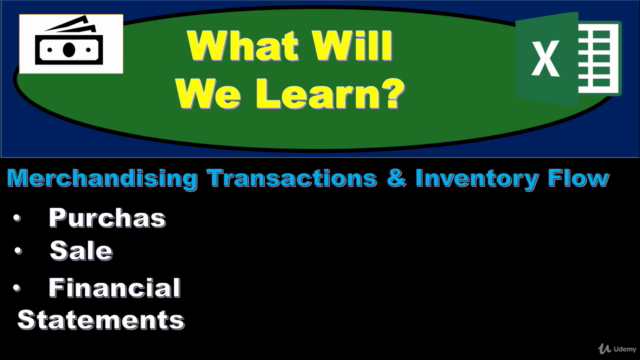Financial Accounting–Inventory & Merchandising Transactions
Mastering Inventory Accounting: From Merchandising Transactions to Cost Flow Assumptions
4.58 (384 reviews)

53,553
students
22 hours
content
Nov 2022
last update
$54.99
regular price
What you will learn
Understand and process various types of merchandising transactions, including the purchase and sale of inventory.
Comprehend and apply knowledge of sales discounts, purchase discounts, sales returns, allowances, and inventory shrinkage.
Calculate and interpret the cost of goods sold in different types of businesses.
Differentiate between perpetual and periodic inventory systems and identify the pros and cons of each.
Understand what is included in the cost of inventory, including freight costs, insurance costs, and discounts.
Grasp inventory flow assumptions such as specific identification, first in first out (FIFO), last in first out (LIFO), and weighted average methods.
Apply FIFO, LIFO, and weighted average methods under both periodic and perpetual inventory systems.
Recognize the intricacies and challenges of inventory tracking.
Prepare and interpret financial statements of a merchandising company.
Solve comprehensive problems covering the full accounting cycle for a merchandising company, including recording financial transactions, adjusting entries, and
Improve their test-taking skills and tackle multiple choice questions and short calculation questions related to inventory accounting.
Screenshots




1608074
udemy ID
3/20/2018
course created date
4/1/2020
course indexed date
Lee Jia Cheng
course submited by